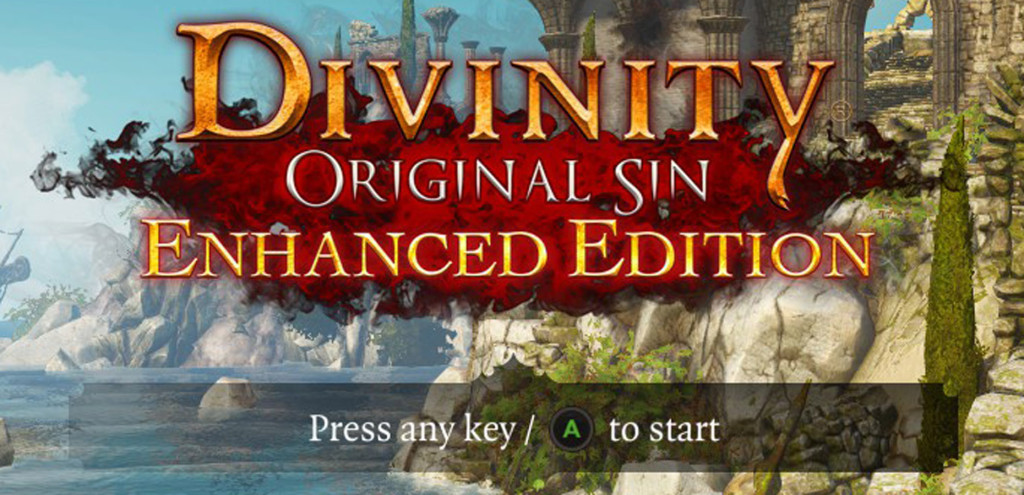So guys, the time is here. Ive been playing Divinity: Original Sin, Enhanced Edition pretty religiously since it's release in October, and after around 100 hours of play time, I'm sad to say it's done. Below you will find my review of this beautifully crafted turn based RPG and I'll admit straight off that I'm a bit biased because this game is in my opinion one of, if not the best, RPG of it's type out there now. So without further ado.... Those of you who know about Divinity: Original Sin, already know that folks who own the game got a free copy of the enhanced edition. Original Sin is a really great game with a beautifully lit, well crafted world containing excellent dialogue that tells a very good, if a bit predictable, story. When it was released the enhanced edition brought to the table something like 1300 changes and additions. Some of the most immediately noticeable of these are the now fully voice acted cast, the 360 degree camera controls, Direct X 11 support and greatly reduced load screen times. Many, many more changes become evident as you play, even some extra content and the free inclusion of the DLC from Original Sin.
Those of you who know about Divinity: Original Sin, already know that folks who own the game got a free copy of the enhanced edition. Original Sin is a really great game with a beautifully lit, well crafted world containing excellent dialogue that tells a very good, if a bit predictable, story. When it was released the enhanced edition brought to the table something like 1300 changes and additions. Some of the most immediately noticeable of these are the now fully voice acted cast, the 360 degree camera controls, Direct X 11 support and greatly reduced load screen times. Many, many more changes become evident as you play, even some extra content and the free inclusion of the DLC from Original Sin.
So here's the rundown: When you start a new game you'll have the choice of playing in single player mode where you can either play by yourself or with a friend in split screen. Or you can choose multiplayer, where you'll begin a game online and can then invite your friends to join your game and play cooperatively. The single player and multiplayer options do use different save files though, so there's no playing your online characters in offline mode. Luckily you'll have the availability of creating multiple profiles so you can have an online game with friends on one profile while playing your single player game on another. Either way you'll be creating and playing two characters that are referred to as Source Hunters.
"Source" is the game's name for magic and was tainted eons ago by an ancient evil. As a result it's not looked upon happily by most people and the Source Hunters are there to find "Sourcerers" and judge them. Not all Source is bad however, as the game tells you early on, but the lines are very vague and you'll be seeing and using many different types throughout your time playing so it's mostly a story item. Soon, you two Source Hunters are pulled away from what's to be your first assignment and drawn in to a world changing event. Thus begins your quest to be all that you can be and save the world. Pretty typical plot line, but where Divinity differs is that as your characters will constantly change their opinions about things. This is handled by you as the player, both through dialogue options with NPCs and your individual party members. You might even draw different conclusions between your two main characters resulting in an argument that is to be solved with a mini-game. Dialogues can and often will change your characters traits and those traits have a direct effect on how other NPC's and even your own party members treat you. Just remember that the things you say in dialogues have consequences. Even though these changes won't directly affect the story itself, they do help the story to be told in a way that feels so much deeper and a lot less linear than the typical "Chosen one saves the world" path.
Pretty typical plot line, but where Divinity differs is that as your characters will constantly change their opinions about things. This is handled by you as the player, both through dialogue options with NPCs and your individual party members. You might even draw different conclusions between your two main characters resulting in an argument that is to be solved with a mini-game. Dialogues can and often will change your characters traits and those traits have a direct effect on how other NPC's and even your own party members treat you. Just remember that the things you say in dialogues have consequences. Even though these changes won't directly affect the story itself, they do help the story to be told in a way that feels so much deeper and a lot less linear than the typical "Chosen one saves the world" path.
To get started you'll be put into a tutorial area that will run you through movement, party selection, inventory and character screens, camera controls etc. and very soon you'll be in the action. Rivellon itself, this is the world where Divinity: Original Sin takes place, is utterly beautiful. The maps are richly colored and well lit, the layouts are sensible, and the locales are pretty nice to look at. There are times when you might be traveling through an area and there will be a break in the trees opening up to a far off view and this kind of thing is really eye-catching to me. Texture resolution isn't crazy high but it's by no means blotchy or ugly. The lava and magma textures in particular are pretty superb. There is a depth of field option in the menu if you hate that blur in the background that's out of focus. Overall though this game is as beautiful to look at as it is to play.
As always, click on images to see them full size


 Exploration is totally free except for a few locked doors early on that the local guards won't open until you're considered strong enough, but feel free to run around and talk to everybody. NPCs are useful, mostly. Some of them have canned dialogue but lots of them actually have something to say, and quite a few of them have side quests to pick up and perform. Even some animals have quests for you, pick up the "pet friend" skill and you'll see for yourself. And folks, I really suggest trying to do every quest and side quest that is available to do. Rewards are usually good, but really what you're looking for with questing (aside from story progression) is experience. Monsters don't respawn, so you can't just go grind a level to catch up if you chose not to deliver that note in your pack.
Exploration is totally free except for a few locked doors early on that the local guards won't open until you're considered strong enough, but feel free to run around and talk to everybody. NPCs are useful, mostly. Some of them have canned dialogue but lots of them actually have something to say, and quite a few of them have side quests to pick up and perform. Even some animals have quests for you, pick up the "pet friend" skill and you'll see for yourself. And folks, I really suggest trying to do every quest and side quest that is available to do. Rewards are usually good, but really what you're looking for with questing (aside from story progression) is experience. Monsters don't respawn, so you can't just go grind a level to catch up if you chose not to deliver that note in your pack.
Quests in Divinity are not level based. That is to say the log doesn't suggest what level you should be to take something on, and some quests will last you through several areas in the game with many ways to progress. It's up to you to decide if and when you're ready to take something on. Some quests require the solving of puzzles, which can be quite a challenge. If you get stuck, just stop and think, and take a look around, they're very solvable. Remember that pet friend skill? Maybe try talking to a passing rat, they can help with hints in tough situations.  Speaking of puzzles: One place I never finished fully was a point later in the game that required the placement of characters on pressure plates to open doors in specific areas that require teleporting and just too much sequencing for me to want to finish. Luckily enough for me that area only had one necessary line of progression and the rest was optional so it was fine, but I would have had to check a walk-through to make it through there with total completion.
Speaking of puzzles: One place I never finished fully was a point later in the game that required the placement of characters on pressure plates to open doors in specific areas that require teleporting and just too much sequencing for me to want to finish. Luckily enough for me that area only had one necessary line of progression and the rest was optional so it was fine, but I would have had to check a walk-through to make it through there with total completion. Save your game often and use multiple save points. Combat can be very challenging, which is wonderful in a world of games that give you a "win button". If you find yourself getting your posterior served to you on a shiny plate, try reloading your game and coming at the fight from a different angle; and remember, ambushes happen pretty often so it's easy to be caught off guard. A suggestion from me is that every fight you win, make sure you heal your party up to full and wait for your cooldowns to refresh. The downtime is minimal and it'll save you some frustration in case you move three steps and start another fight when you're not at 100%. Battles are handled very well, balance is pretty even until you're much stronger when you'll be outnumbered... a lot. Winning a fight that has had you pulling your hair out is really satisfying especially when you hit the alt key and see all that precious loot on the ground. And what's great is that if you find yourself just stuck regardless, you can often just go back to town and buy some scrolls or upgrade your gear to give yourself a bit of an upper hand. The game gives you everything you need to make your play time successful.
Save your game often and use multiple save points. Combat can be very challenging, which is wonderful in a world of games that give you a "win button". If you find yourself getting your posterior served to you on a shiny plate, try reloading your game and coming at the fight from a different angle; and remember, ambushes happen pretty often so it's easy to be caught off guard. A suggestion from me is that every fight you win, make sure you heal your party up to full and wait for your cooldowns to refresh. The downtime is minimal and it'll save you some frustration in case you move three steps and start another fight when you're not at 100%. Battles are handled very well, balance is pretty even until you're much stronger when you'll be outnumbered... a lot. Winning a fight that has had you pulling your hair out is really satisfying especially when you hit the alt key and see all that precious loot on the ground. And what's great is that if you find yourself just stuck regardless, you can often just go back to town and buy some scrolls or upgrade your gear to give yourself a bit of an upper hand. The game gives you everything you need to make your play time successful.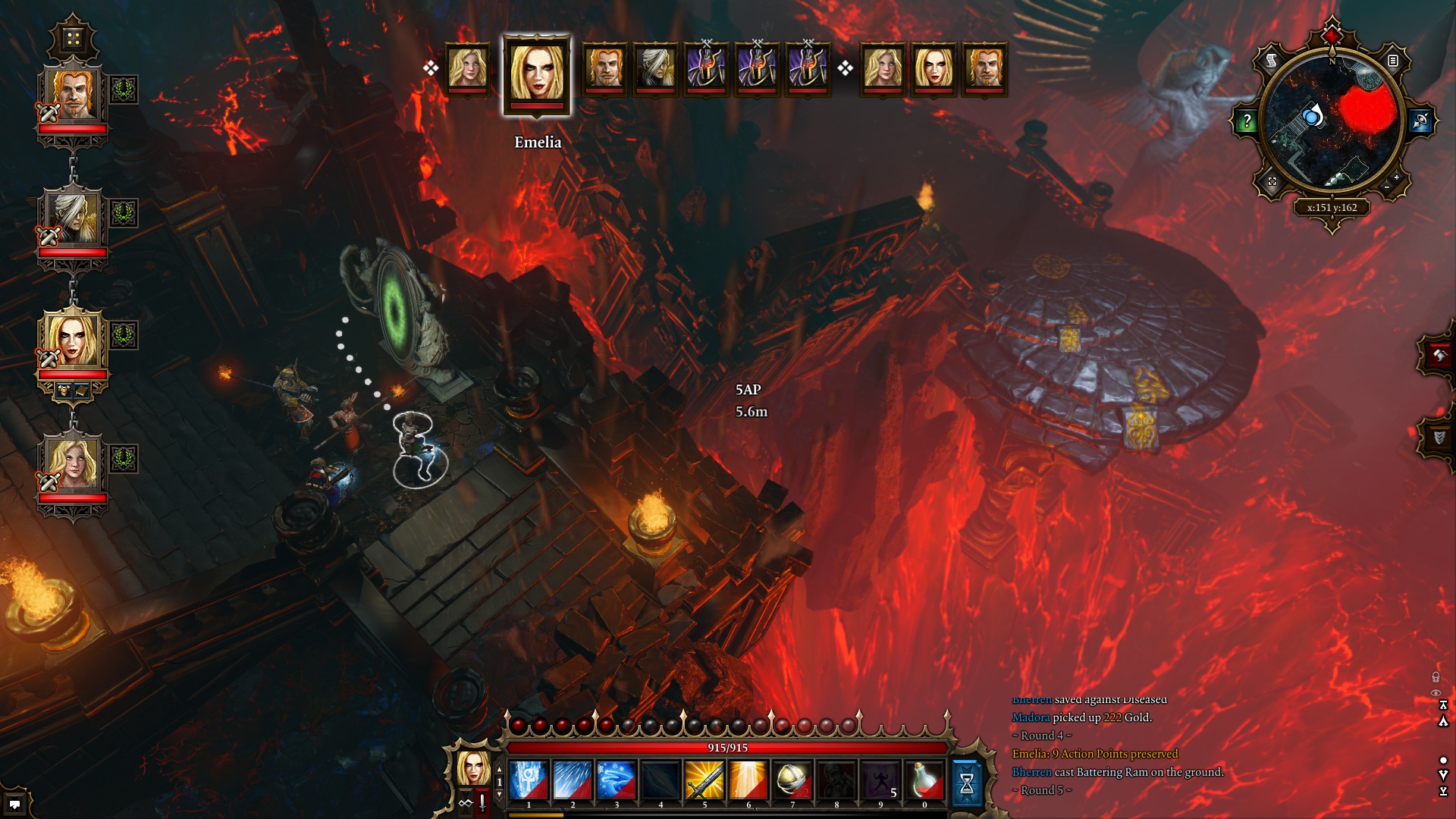
 I can't talk about combat without going into systems a bit. So, when you're just moving about the world it's a click and move ARPG type system. However when you start combat this initiates turn based mode. Your characters will stand in formation and the game will begin to determine your place in battle by your stat numbers. Characters with higher initiative will have a place in battle earlier than those with lower initiative, I.E. Rangers, Rogues etc. Higher strength will allow the use of heavier gear and affect the damage output of melee characters. I.E. knights, fighters, etc. One character at a time will have their turn in battle and will be using their Action Points to perform actions and move across the battlefield. These action points and skill costs in battle are also affected by your character's stats.
I can't talk about combat without going into systems a bit. So, when you're just moving about the world it's a click and move ARPG type system. However when you start combat this initiates turn based mode. Your characters will stand in formation and the game will begin to determine your place in battle by your stat numbers. Characters with higher initiative will have a place in battle earlier than those with lower initiative, I.E. Rangers, Rogues etc. Higher strength will allow the use of heavier gear and affect the damage output of melee characters. I.E. knights, fighters, etc. One character at a time will have their turn in battle and will be using their Action Points to perform actions and move across the battlefield. These action points and skill costs in battle are also affected by your character's stats.
 Don't worry though this is not nearly as complicated as it sounds. The game does a great job at making things clear to you. Explanations are available with a little mouse hovering and the information is clear and easy to understand. Not to mention you have all the time you want to make a decision, there's no timer on a character's turn. Have a party member with the "Lore Master" skill? Right click on an enemy and examine them to see their strengths and vulnerabilities. Have a party member who's skills would be best applied after the battle is a bit further in? Just delay their turn until the end of the set. Character skills and spells will work with and against each other though their own effects and the environment. So if your in combat and are suddenly lit on fire by a flaming archer, one of your party might cast the "Rain" spell and stop the burning while at the same time weakening the flaming archer. This rain will make the ground wet though so make sure your air caster doesn't use a lightning spell or you might stun your whole party for a few turns. You'll learn quickly how the environment can change and effect the way a battle plays out.
Don't worry though this is not nearly as complicated as it sounds. The game does a great job at making things clear to you. Explanations are available with a little mouse hovering and the information is clear and easy to understand. Not to mention you have all the time you want to make a decision, there's no timer on a character's turn. Have a party member with the "Lore Master" skill? Right click on an enemy and examine them to see their strengths and vulnerabilities. Have a party member who's skills would be best applied after the battle is a bit further in? Just delay their turn until the end of the set. Character skills and spells will work with and against each other though their own effects and the environment. So if your in combat and are suddenly lit on fire by a flaming archer, one of your party might cast the "Rain" spell and stop the burning while at the same time weakening the flaming archer. This rain will make the ground wet though so make sure your air caster doesn't use a lightning spell or you might stun your whole party for a few turns. You'll learn quickly how the environment can change and effect the way a battle plays out.
Gearing your party up is pretty simple. Vendors have a lot of goods varying from basic food items, to crafting and skill based ingredients, to the standard fare of arms and armor. As a vendor gets to know you more and more their attitude towards your individual party members will change and that affects the prices for buying and selling as well as repairs and identification of new magical items. You're also going to find a great number of items via combat you can either use right away or keep on hand to sell for funding your shopping sprees. Also on a related side note your party's inventory is as big as it needs to be. Your characters are only limited by the weight they can carry, which is a lot. I never ran into a problem with carry limits.

 Both versions of Original Sin also have a crafting system. This means you can make a lot of items to help you along the way as long you have the skill and the ingredients. Everything from food, to magical arrow types, to weapons and armor can be created by you. You'll need the skill and the equipment required to make this happen of course. For instance the basic "crafting" skill will allow you to dye your armors different colors and provide the ability to create thrown items, like grenades that can have effects ranging from damaging enemies to healing your own party members, as long you have the raw ingredients. Likewise cooking is handled with the crafting skill and will allow you to make food that has various effects on your party members, you'll need a cooking pot, but they're easy to come by. "Blacksmithing", allows the creation of weapons and armor and lets you improve items you already have as long as you're near a forge or whetstone. It'll also let you repair your own gear for free from anywhere as long you have a repair hammer or tongs in your inventory.
Both versions of Original Sin also have a crafting system. This means you can make a lot of items to help you along the way as long you have the skill and the ingredients. Everything from food, to magical arrow types, to weapons and armor can be created by you. You'll need the skill and the equipment required to make this happen of course. For instance the basic "crafting" skill will allow you to dye your armors different colors and provide the ability to create thrown items, like grenades that can have effects ranging from damaging enemies to healing your own party members, as long you have the raw ingredients. Likewise cooking is handled with the crafting skill and will allow you to make food that has various effects on your party members, you'll need a cooking pot, but they're easy to come by. "Blacksmithing", allows the creation of weapons and armor and lets you improve items you already have as long as you're near a forge or whetstone. It'll also let you repair your own gear for free from anywhere as long you have a repair hammer or tongs in your inventory.
I personally didn't use the crafting skills much beyond the ability to repair my own items and dye my gear new colors. However, I know of people who spend a lot of time crafting in this game and there are special recipes to be found that can create some pretty spectacular items that can then be improved throughout your time playing. I think during my next play through I'll spend some time making gear and seeing what's out there.
You'll of course want to gear your party members toward their skills and stats. For instance my two main characters are a Knight and a Cleric. I wanted to gear the cleric toward strength and intelligence. Easy enough but it meant I had to sacrifice some constitution or I'd end up with a fairly squishy healer. So I decided to make her a sword and board type and went with a one handed weapon specialty, and shield specialty. The block chance that the shield gave was enough to compensate for the lost constitution and a lot of stat points were made up for by the higher level gear I found as the game went on. This of course meant that I was looking for one handed weapons and shields primarily, and with enough strength she was also able to wear heavier armors without taking as much of a penalty for movement and actions in combat. This brings me to one of the best and most comprehensive features of this game. Character creation and development. Yeah I know it seems like this should have been much further up in the review but you'll understand why I waited in a moment. As mentioned at the beginning of the article you're creating two main characters when you start a new game. You'll decide the sex of the two and the way they look and also their starting class. Therein is the key *starting* class. You'll choose from quite a few presets and are given points to distribute to get you started, but as you play you're in no way locked in to playing that class.
This brings me to one of the best and most comprehensive features of this game. Character creation and development. Yeah I know it seems like this should have been much further up in the review but you'll understand why I waited in a moment. As mentioned at the beginning of the article you're creating two main characters when you start a new game. You'll decide the sex of the two and the way they look and also their starting class. Therein is the key *starting* class. You'll choose from quite a few presets and are given points to distribute to get you started, but as you play you're in no way locked in to playing that class.  Let's say you started a Rogue, and as you're playing you're deciding you're not really into the class skills or the way the character is playing in general. Well you can decide as you level up to train in different skills, change the way your stat points are being placed and pretty soon you've got pretty decent fighter that can dual wield, or a really stealthy mage class that can also back-stab the crap out of baddies. You can really play however you want to. And at one point ---this is a very minor spoiler so skip to the next paragraph if you just can't handle it--- you'll even gain access to an NPC who can completely refund your points so you can respec your character. The fee for this is great however and I recommend thinking about that choice at length before committing to it. At least give yourself a backup save beforehand.
Let's say you started a Rogue, and as you're playing you're deciding you're not really into the class skills or the way the character is playing in general. Well you can decide as you level up to train in different skills, change the way your stat points are being placed and pretty soon you've got pretty decent fighter that can dual wield, or a really stealthy mage class that can also back-stab the crap out of baddies. You can really play however you want to. And at one point ---this is a very minor spoiler so skip to the next paragraph if you just can't handle it--- you'll even gain access to an NPC who can completely refund your points so you can respec your character. The fee for this is great however and I recommend thinking about that choice at length before committing to it. At least give yourself a backup save beforehand.
I chose to more or less stay with the preset classes that I made because I had the idea of what my party should consist of and that really never faltered. I played the game with two Knights, a Cleric and a Ranger. Everyone could take a hit and deal damage, and two of those classes could heal and remove bad status and afflictions. It made for a very well balanced party for me. The problem with the character development being what it is in Divinity Enhanced, is that if you put the game down for a couple of weeks you might forget how you were building your party. That could potentially hamper your progression in a pretty bad way. But if you're like me, you won't be able to stop once you pick it up. --MAJOR SPOILER AHEAD-- Before I get to the conclusion I'm going to include one major spoiler. So here's your chance to skip to the next paragraph if you don't want to read about it. And the only reason I'm doing this is because it can cause so much frustration I think some people might just quit the game. It's the only item in this game, either Original Sin or the Enhanced Edition, that I would consider a truly poorly designed element. So the thing is, early on you'll have an opportunity to gain a party member named Bairdotr. She's got a great voice casting and is a very good member to have in your party. If you decide differently then this may mean nothing to you. So Bairdotr's goal in the game is to find a friend of hers who's gone missing. You'll find this out very early in the game, less than 10 hours in. You'll have her in your party investing time and effort and perhaps like in my case, making her a pretty key member. Then around 60 hours in you'll come to discover her friend that she's been trying to find, just through exploration. As you approach this person a dialogue will begin automatically between he and Bairdotr. Now, if you have been staying consistent in your dialogues throughout your play time you'll be gaining traits for your characters. If you've gained the trait "Obedient" by this time, Bairdotr will leave your party and turn against you. There are no indications throughout your dialogues with Bairdotr at any point during your time playing that anything untoward is taking place, and there's nothing you can say or do to change her decision to leave when it happens. I was left mouth agape and fuming. Here I was with a party member that I'd spent the better part of 50-ish hours developing, and just like that, with zero warning, she's an enemy. What the actual fuck is that?! However if your dialogue choices have managed to gain you the "Independent" trait beforehand instead, this is the opposite of the "Obedient" trait, Bairdotr stays with you and all that time you spent building a powerful character won't go to waste. Again though, there is no indication that her attitude toward you has changed until your party is in range of Bairdotr's friend and the dialogue between them starts. I was lucky enough to be able to load a game a couple of hours back and enter dialogues with a couple of other story NPCs that gave me the proper trait and thereby allowed me to keep Bairdotr in my party. You can also cheat the quest by carefully approaching Bairdotr's friend in question with her being kept out of range to engage in dialogue, and just attack and kill the guy without talking to him at all. This will avoid Bairdotr leaving; but the quest is never resolved that way. This was an extremely frustrating obstacle to run across in a title as well polished and put together as this one. My opinion on the subject is that the dialogue should have been handled through the same mini-game that handles arguments with the winning result being "Independent" and the losing result being "Obedient". This would at least give you the chance to keep Bairdotr without dozens of hours of pre-planning; and if you lost, well at least you lost fairly.
--MAJOR SPOILER AHEAD-- Before I get to the conclusion I'm going to include one major spoiler. So here's your chance to skip to the next paragraph if you don't want to read about it. And the only reason I'm doing this is because it can cause so much frustration I think some people might just quit the game. It's the only item in this game, either Original Sin or the Enhanced Edition, that I would consider a truly poorly designed element. So the thing is, early on you'll have an opportunity to gain a party member named Bairdotr. She's got a great voice casting and is a very good member to have in your party. If you decide differently then this may mean nothing to you. So Bairdotr's goal in the game is to find a friend of hers who's gone missing. You'll find this out very early in the game, less than 10 hours in. You'll have her in your party investing time and effort and perhaps like in my case, making her a pretty key member. Then around 60 hours in you'll come to discover her friend that she's been trying to find, just through exploration. As you approach this person a dialogue will begin automatically between he and Bairdotr. Now, if you have been staying consistent in your dialogues throughout your play time you'll be gaining traits for your characters. If you've gained the trait "Obedient" by this time, Bairdotr will leave your party and turn against you. There are no indications throughout your dialogues with Bairdotr at any point during your time playing that anything untoward is taking place, and there's nothing you can say or do to change her decision to leave when it happens. I was left mouth agape and fuming. Here I was with a party member that I'd spent the better part of 50-ish hours developing, and just like that, with zero warning, she's an enemy. What the actual fuck is that?! However if your dialogue choices have managed to gain you the "Independent" trait beforehand instead, this is the opposite of the "Obedient" trait, Bairdotr stays with you and all that time you spent building a powerful character won't go to waste. Again though, there is no indication that her attitude toward you has changed until your party is in range of Bairdotr's friend and the dialogue between them starts. I was lucky enough to be able to load a game a couple of hours back and enter dialogues with a couple of other story NPCs that gave me the proper trait and thereby allowed me to keep Bairdotr in my party. You can also cheat the quest by carefully approaching Bairdotr's friend in question with her being kept out of range to engage in dialogue, and just attack and kill the guy without talking to him at all. This will avoid Bairdotr leaving; but the quest is never resolved that way. This was an extremely frustrating obstacle to run across in a title as well polished and put together as this one. My opinion on the subject is that the dialogue should have been handled through the same mini-game that handles arguments with the winning result being "Independent" and the losing result being "Obedient". This would at least give you the chance to keep Bairdotr without dozens of hours of pre-planning; and if you lost, well at least you lost fairly.  So in conclusion, Divinity: Original Sin, Enhanced Edition is a really well made, beautiful and challenging turn based RPG with a great story. One of the best of it's kind in my unwavering opinion, and I'll be playing it through again before too long I'm sure. So would I recommend this title? Does and old Mazda rotary engine require 2-stroke mix oil in the gas? The answer is hell yes it does, and hell yes I would recommend this title! If you like a good RPG, with great mechanics, play this. If you already have Original Sin but haven't picked up and started playing the Enhanced Edition, play this. Is it worth starting over from scratch from the previous version? Probably not, depends on how far you're in already, but you're gonna want to play again at some point and in that case, play this. The changes and additions the Enhanced Edition brings make it basically a new game. It's worth it people! You're going to love it, and if you don't... then you're not my friend anymore.
So in conclusion, Divinity: Original Sin, Enhanced Edition is a really well made, beautiful and challenging turn based RPG with a great story. One of the best of it's kind in my unwavering opinion, and I'll be playing it through again before too long I'm sure. So would I recommend this title? Does and old Mazda rotary engine require 2-stroke mix oil in the gas? The answer is hell yes it does, and hell yes I would recommend this title! If you like a good RPG, with great mechanics, play this. If you already have Original Sin but haven't picked up and started playing the Enhanced Edition, play this. Is it worth starting over from scratch from the previous version? Probably not, depends on how far you're in already, but you're gonna want to play again at some point and in that case, play this. The changes and additions the Enhanced Edition brings make it basically a new game. It's worth it people! You're going to love it, and if you don't... then you're not my friend anymore.
System Requirements for Divinity: Original Sin, Enhanced Edition are as follows:
MINIMUM:
OS: Windows 7 SP1 64-bit or Windows 8.1 64-bit or Windows 10 64-bit
Processor: Intel Core2 Duo E6600 or equivalent
Memory: 2048 MB RAM
Graphics: DirectX 11 Compatible GPU
DirectX: Version 11
Hard Drive: 10000 MB available space
RECOMMENDED:
OS: Windows 7 SP1 64-bit or Windows 8.1 64-bit or Windows 10 64-bit
Processor: Intel i5 2400 or higher
Memory: 4096 MB RAM
Graphics: NVIDIA® GeForce® GTX 550 or ATI™ Radeon™ HD 6XXX or higher
DirectX: Version 11
Hard Drive: 10000 MB available space
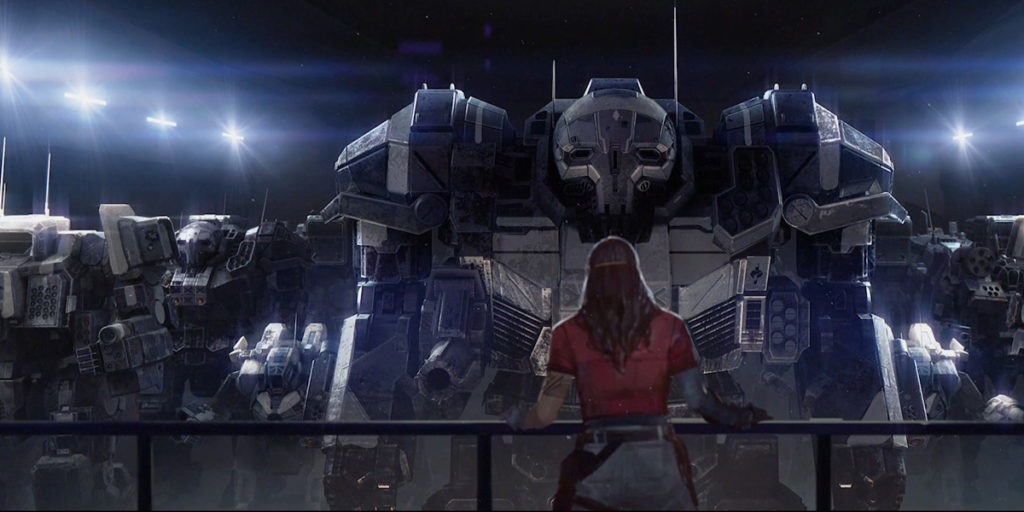

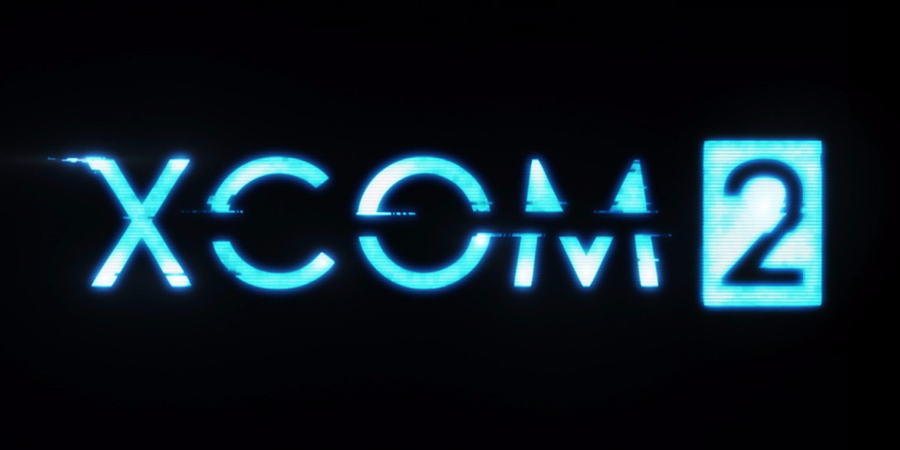
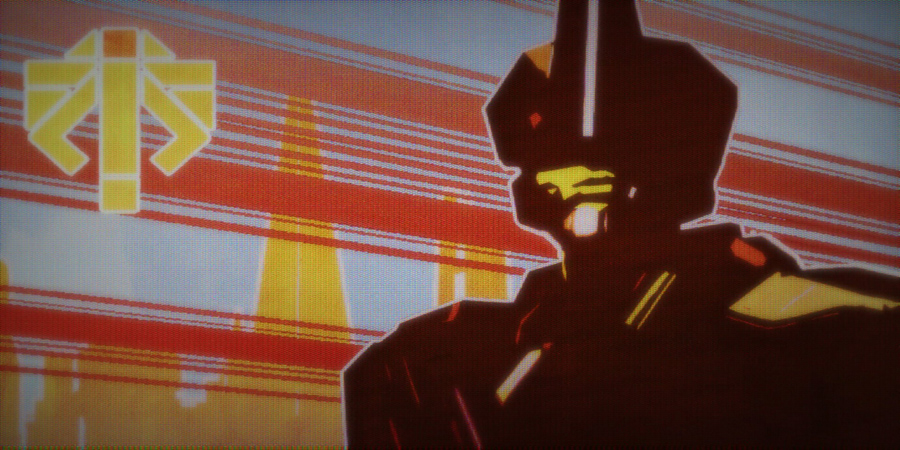


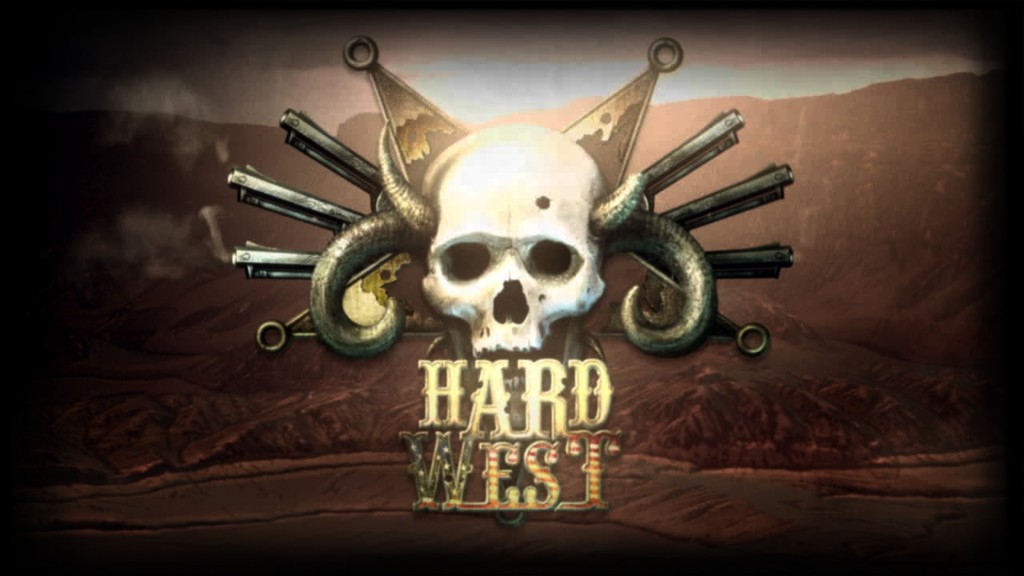









 showing the effectiveness of your currently equipped weapon versus the range of your target. Handguns and shotguns have a short to medium range, rifles a medium to long range, and scoped rifles only a long range. Some weapons use the extreme versions of this modifier. Sawed off shot guns are very close up weapons, and the Elephant Rifle is only effective at a very long distance. You'll incur a significant aim and chance to hit penalty by challenging ranges, so pay attention to that and remember weapon swapping is a free action.
showing the effectiveness of your currently equipped weapon versus the range of your target. Handguns and shotguns have a short to medium range, rifles a medium to long range, and scoped rifles only a long range. Some weapons use the extreme versions of this modifier. Sawed off shot guns are very close up weapons, and the Elephant Rifle is only effective at a very long distance. You'll incur a significant aim and chance to hit penalty by challenging ranges, so pay attention to that and remember weapon swapping is a free action. Most characters will start with a standard six shooter. You'll also be able to purchase or find secondary weapons at traders and after completing missions respectively. Soon, gun variations will become apparent. For instance a Derringer only does three damage, but it will allow two shots per turn as long as you have the action points, it takes one per shot. So it has the potential of doing up to six damage per turn. The downside of a Derringer is of course its very short effective range and the fact that it only has two ammunition. Scoped rifles have only one ammunition and are only effective at long range, but happen to be very powerful. With both action points and some luck left a character can use its "Scoped Shot" ability. This will allow a 100% chance to hit whoever is targeted, but has a three turn cool down. So no moving or reloading before firing.
Most characters will start with a standard six shooter. You'll also be able to purchase or find secondary weapons at traders and after completing missions respectively. Soon, gun variations will become apparent. For instance a Derringer only does three damage, but it will allow two shots per turn as long as you have the action points, it takes one per shot. So it has the potential of doing up to six damage per turn. The downside of a Derringer is of course its very short effective range and the fact that it only has two ammunition. Scoped rifles have only one ammunition and are only effective at long range, but happen to be very powerful. With both action points and some luck left a character can use its "Scoped Shot" ability. This will allow a 100% chance to hit whoever is targeted, but has a three turn cool down. So no moving or reloading before firing. Graphics in Hard West, though not the best ever seen in a title like this, are pretty nice to look at. Some of the design might seem a little generic at first, but it's really got its own flavor the more you see it. Lighting is nice, animations are simple but smooth and the ability to rotate the map 360 degrees will give you a full view of the field.
Graphics in Hard West, though not the best ever seen in a title like this, are pretty nice to look at. Some of the design might seem a little generic at first, but it's really got its own flavor the more you see it. Lighting is nice, animations are simple but smooth and the ability to rotate the map 360 degrees will give you a full view of the field.

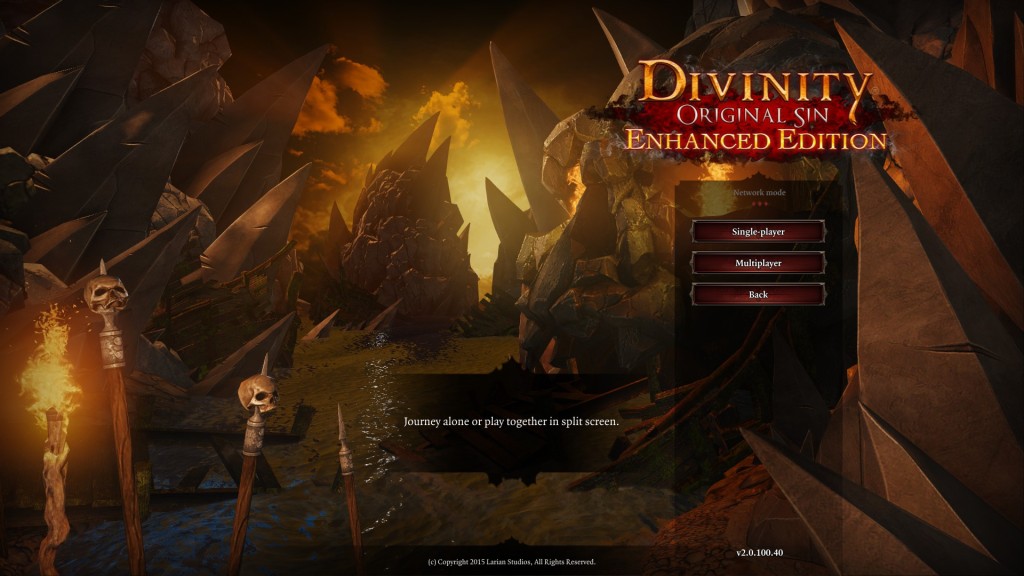
 Those of you who know about Divinity: Original Sin, already know that folks who own the game got a free copy of the enhanced edition. Original Sin is a really great game with a beautifully lit, well crafted world containing excellent dialogue that tells a very good, if a bit predictable, story. When it was released the enhanced edition brought to the table something like
Those of you who know about Divinity: Original Sin, already know that folks who own the game got a free copy of the enhanced edition. Original Sin is a really great game with a beautifully lit, well crafted world containing excellent dialogue that tells a very good, if a bit predictable, story. When it was released the enhanced edition brought to the table something like 















